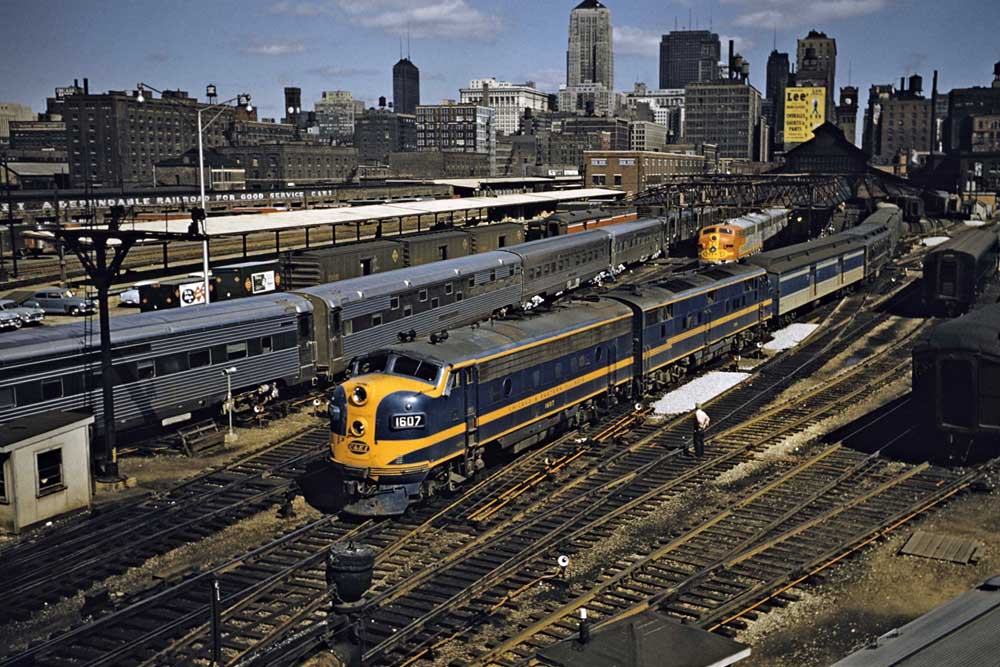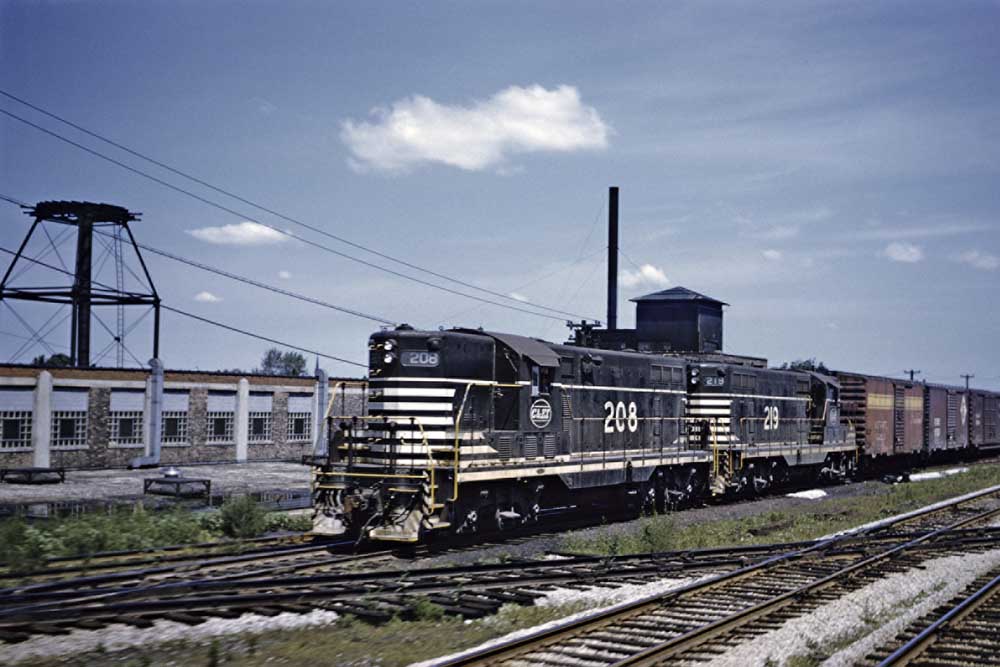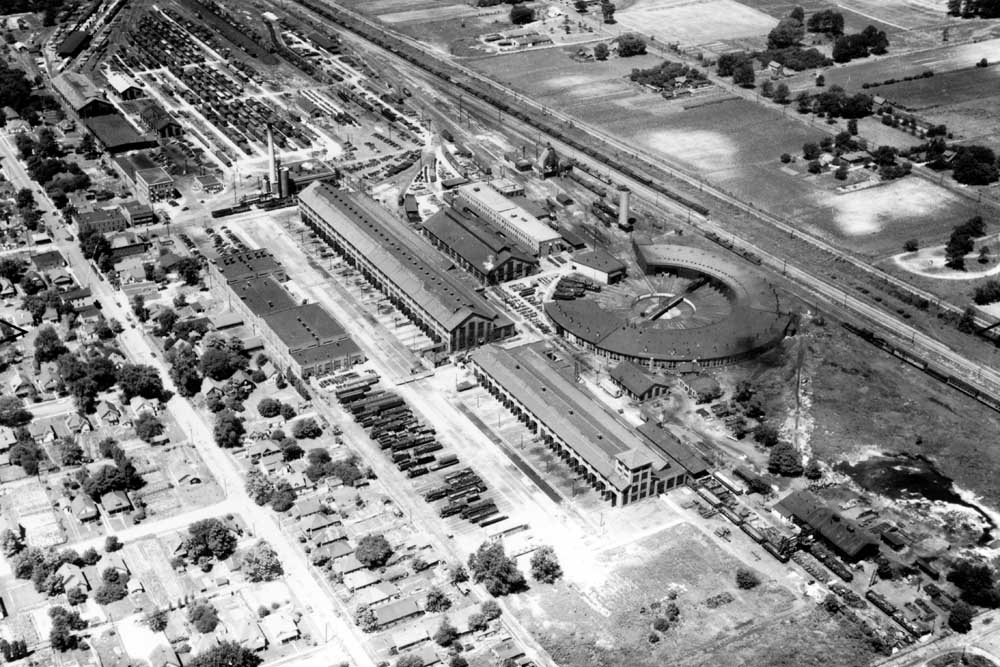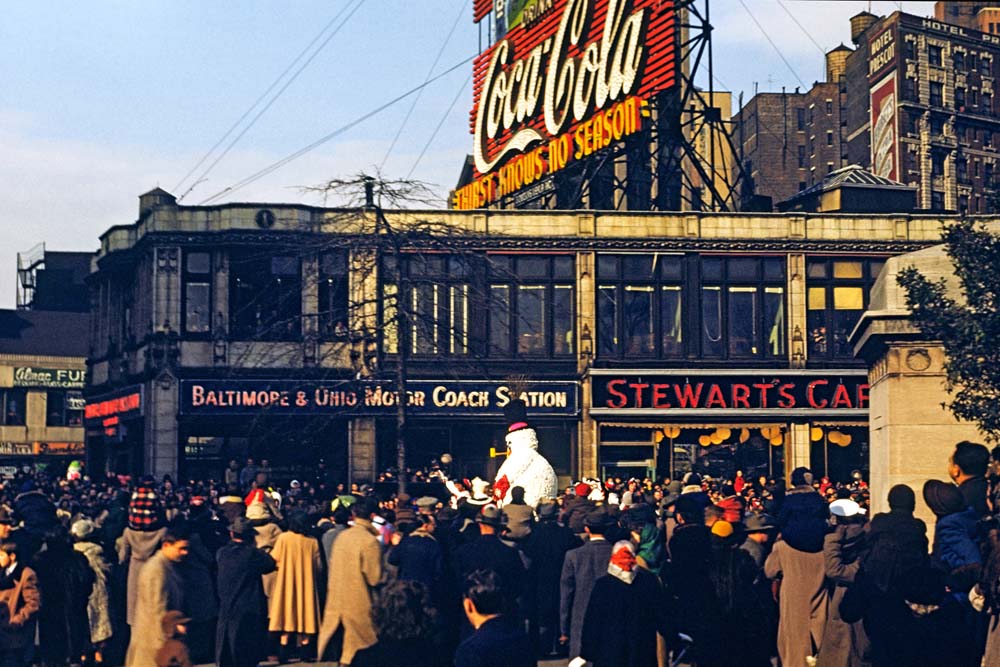Chicago & Eastern Illinois history was special to those to watched the railroad firsthand.

In the pantheon of great railroad names, “Chicago” was so often the magic word. Think of all the carriers with Chicago on their letterhead, railroads with thousands of miles on their system maps, railroads whose names imply vast, continental distances: Chicago, Rock Island & Pacific. Chicago, Milwaukee, St. Paul & Pacific. Chicago & North Western. Or railroads that, at one point in their history, set gold standards of one kind or another: Chicago, Burlington & Quincy, with its incomparable Zephyrs. Chicago South Shore & South Bend and Chicago North Shore & Milwaukee, with their thundering high-speed interurbans.
And then there’s the Chicago & Eastern Illinois, a railroad with a name that’s utterly practical and prosaic. C&EI went pretty much where it said it did: from Chicago due south through the cornfields along the Illinois-Indiana state line. Its route map looked like a trident, splitting at Woodland Junction, 64 miles south of Chicago, into two main lines that served St. Louis to the southwest and Evansville, Ind., to the south, with a secondary main off the St. Louis line that went straight south into Illinois’ southernmost “Egypt” region. C&EI was headquartered in Chicago; its operations hub was Danville, 123 miles south.
C&EI was often described as respectable but unremarkable. Through most of the 20th century, its revenues placed it in the middle on the AAR’s list of Class I railroads. Its 1940 route-mileage was a modest 925. It was a minor player at Chicago’s Dearborn Station, even more so at St. Louis Union Station. In the steam era, C&EI operated a conventional fleet of locomotives dominated by 2-8-2s and 4-6-2s; it never owned an engine with a four-wheel trailing truck. C&EI dieselized after World War II with mostly off-the-shelf EMD F units, Geeps, and switchers, although three BL2s and four Alco RS1s spiced up the mix. C&EI’s overall complexion caused my friend, George H. Drury, to write of the C&EI being “mediocre.”
George meant no harm. His essay, “Unremarked, Unremarkable,” in July 1983 Trains, explained that mediocre meant “not outstandingly good or outstandingly bad.” (This from a guy whose favorite railroad is the Boston & Maine!) In his book, Chicago & Eastern Illinois Railroad in Color (Morning Sun Books, 2001), Ed DeRouin called the railroad “Plain Vanilla.”

A railroad of my youth
I’ve decided George and Ed were wrong. Take it from someone who, as a 9-year-old, spent many a happy summer hour walking along C&EI’s gleaming double-track main, which slashed imperiously through the sleepy farm village of Alvin, Ill., home of my Aunt Bessie and Uncle John.
My great aunt, Bessie Alison, was a sweet yet stalwart woman who cooked from a coal stove, drew water from a hand pump by the front porch, and once worked as C&EI’s caretaker at the Alvin depot, a few hundred feet from their house at the crossing of Illinois Central’s Rantoul & Eastern branch (abandoned in the 1930s). Her husband, John Alison, also was a C&EI retiree, a wiry little guy with years of back-breaking labor as a section man to his credit. (Full disclosure: My father’s entire side of the family ran deep through Chicago & Eastern Illinois history. My great-grandfather, Peter Keefe, was a leverman, and his son, my grandfather Edgar Keefe, was an operator who retired around 1951, finishing at the train dispatching office in Danville.)
Our family trips from Chicago and later southern Michigan down to Alvin in the late 1950s and early 1960s were like visitations to the turn of the century. Although Aunt Bessie’s hospitality was generous, I didn’t look forward to the relatively primitive conditions, especially the outhouse in back. Nevertheless, any trip to Alvin was exciting, thanks to C&EI’s spectacular diversions.
The tracks ran north-south through town and crossed West Railroad Street a half-block west of the house. I don’t know how busy C&EI was in those days, but in my memory the long summer afternoons were interrupted frequently by the distant sound of air horns, at which point I’d drop whatever I was doing, ditch my brother and sister, and run down the street in time to catch a blur of blue-and-orange cab units and silver passenger cars roaring through town. The sight and sound were enthralling.
Yes, little C&EI had the power to enthrall. And not just for a 9-year-old. In fact, as I learned over the years, the railroad could claim several distinctions that, to me at least, helped it transcend the mediocre.
Take those passenger trains. While it’s true C&EI shared the glory of its most prestigious varnish with many partners — Louisville & Nashville; Nashville, Chattanooga & St. Louis; Atlanta, Birmingham & Coast; Atlantic Coast Line; and Florida East Coast — C&EI hosted them in Chicago, providing the Windy City’s premier Florida train service. Those famous C&EI trains included the Dixie Flagler, Dixie Flyer, and Dixie Limited, as well as L&N’s Georgian and Humming Bird, sleek streamliners with exotic southern destinations, trains that compared favorably with Santa Fe’s more famous Chiefs on Dearborn’s other tracks.
Chicago & Eastern Illinois history had worthy homegrown trains, too, notably postwar streamliners Meadowlark and Whippoorwill. Built by Pullman-Standard and introduced in 1946, the Meadowlark offered daily service between Chicago and Cypress, 345 miles south, while the Whippoorwill linked Chicago with Evansville. Although both trains debuted amid typical fanfare, the Whippoorwill was downgraded to an Evansville local by 1950, and the Meadowlark endured only until 1962, by then equipped with the railroad’s sole Budd RDC-1.
For a time, C&EI went up against three competitors in the tough Chicago-St. Louis market. By the 1930s, this corridor was already well served by Alton, Illinois Central, and Wabash. C&EI entered the fray with the Zipper, which peeled off the 290 miles in 5 hours, a tidy 58 mph average. The Zipper offered a 5 p.m. departure from Chicago and an 8:50 a.m. train from St. Louis (“first to leave, first to arrive,” the railroad said of the morning train). But the performance allowed C&EI only to boast the “fastest standard weight train” in the corridor, for IC bested it by 5 minutes with its new “diesel-electric articulated streamline train,” the Green Diamond. Shortly after the war, C&EI gave up on the St. Louis market.

Modest power, big-time shop
C&EI’s modest motive-power fleet had an immodest home: Oaklawn Shops, on the east end of Danville. Built in stages in 1903 and 1907, Oaklawn featured a 628-foot-long machine and erecting shop, with accompanying coach shop, boiler shop, and 56-stall roundhouse, a facility nearly as sprawling as anything in Roanoke or Altoona. The shop crews were capable of more than routine maintenance, too. In 1940, they fully streamlined and modernized 29-year-old Baldwin USRA Pacific No. 1008 for service on the Dixie Flagler, being introduced as a new Chicago-Miami coach streamliner. The old K-2 Pacific received new Scullin disc driving wheels, a cast-steel drop-coupler pilot, and a sleek black-and-silver skyline casing.
C&EI wasn’t just your typical Midwestern freight hauler, either. Certainly, it carried its share of agricultural products and participated in the fast delivery of merchandise to and from Chicago and its connections. But C&EI had a singular history with another commodity: bituminous coal. After 1911 it absorbed several smaller carriers in southern Illinois and Indiana to serve coal mines. Although competition from lower-priced Appalachian coal severely curtailed C&EI’s tonnage by the 1930s, the traffic surged again in the mid-1950s to meet the demand of new power plants in Danville; Terre Haute, Ind.; and along the Ohio River.
Coal also fueled a curious but significant Chicago & Eastern Illinois history footnote: Elgin, Joliet & Eastern’s use of 100 miles of C&EI trackage rights to tap coalfields. The agreement dated from 1893, when U.S. Steel-owned EJ&E began running three or more coal trains a day from its own small terminal along the C&EI main line at Rossville Junction, Ill., 105 miles from Chicago. From Rossville, EJ&E served several USS-owned mines near Westville, Ill., and Jackson, Ind. The Depression hit EJ&E’s coal business hard, and despite an upsurge during World War II, “the J” ended the arrangement in 1947 as it was dieselizing.
Alas, Chicago & Eastern Illinois history was, shall we say, “checkered,” and as a business entity it could not remain independent. After C&EI Railroad emerged from the Frisco-caused 1912 bankruptcy in 1920, the new C&EI Railway struggled under the ownership of Cleveland’s Van Sweringen brothers, and by 1933 was back in receivership. A new C&EI Railroad emerged in 1940 and remained independent until 1963, when the ICC awarded control to Missouri Pacific, under the condition that the Evansville line go to L&N, which took effect in 1969. Thus did C&EI gradually lose its identity to its two successors, which in turn have given way via merger to today’s Union Pacific (the ex-MoPac St. Louis and Cypress lines) and CSX Transportation (ex-L&N to Evansville).














Nice review of the C&EI. The L&N takeover of the Evansville to Woodland Jct line resulted in diminished traffic on my hometown IC branch which ran from Mattoon to Evansville. L&N could now run directly to Chicago.
The C&EI turned out to be a very valuable property providing MoPac and L&N direct access to Chicago. I think if one were to “redraft” the mergers and acquistions of the 1960s thru 1980s, the C&EI would be fairly highly regarded. Obviously not at the top, but what value could be placed on Chicago access for two large railroads?
Ed